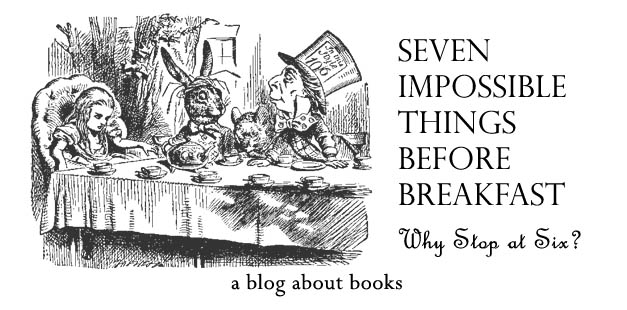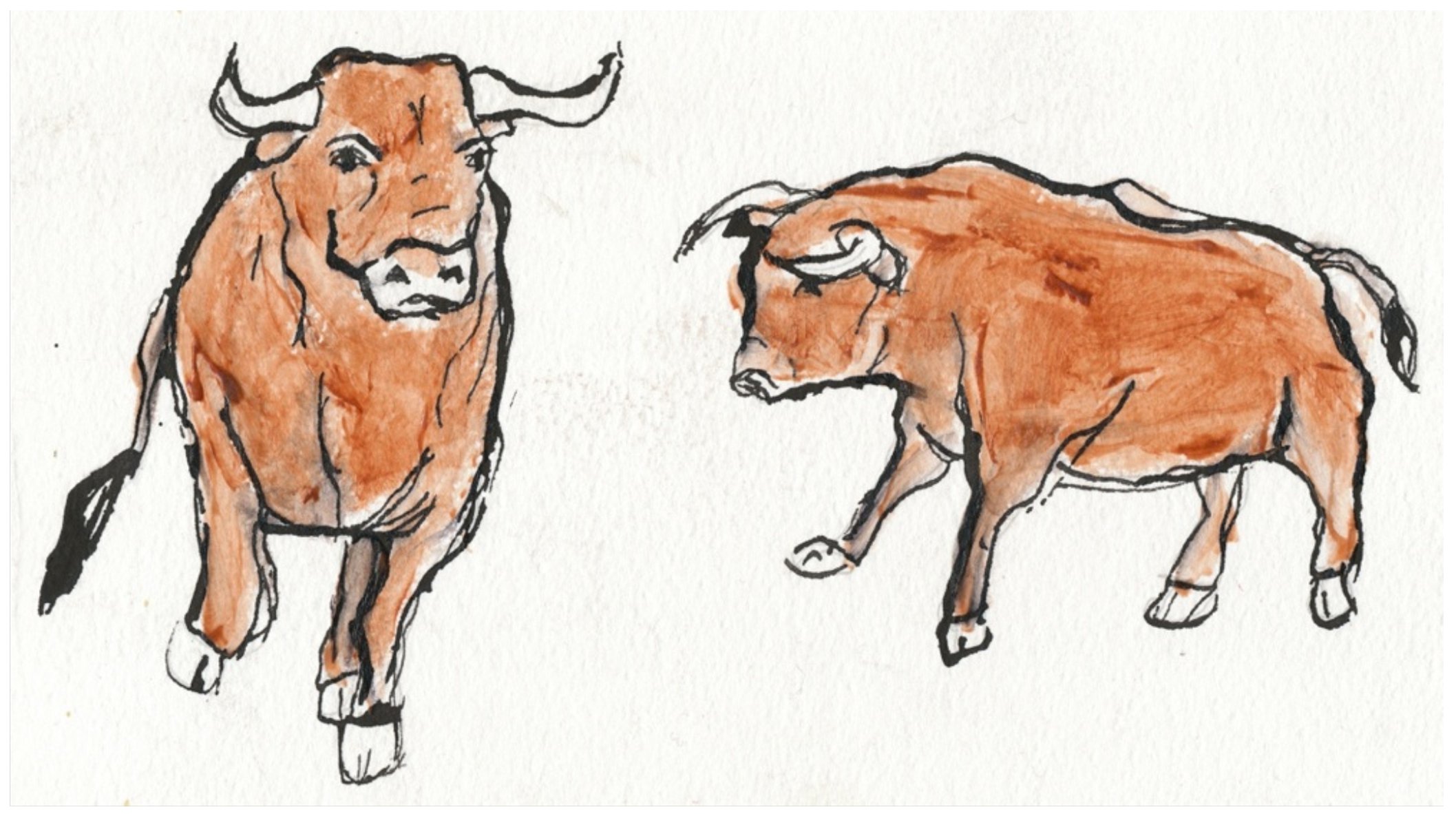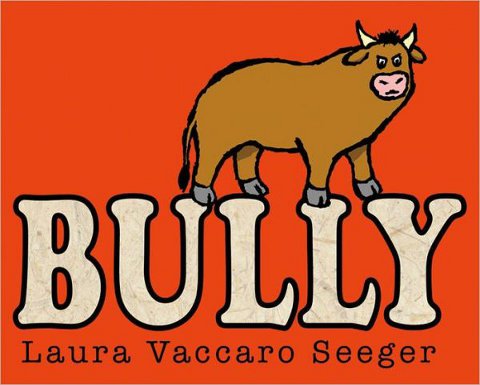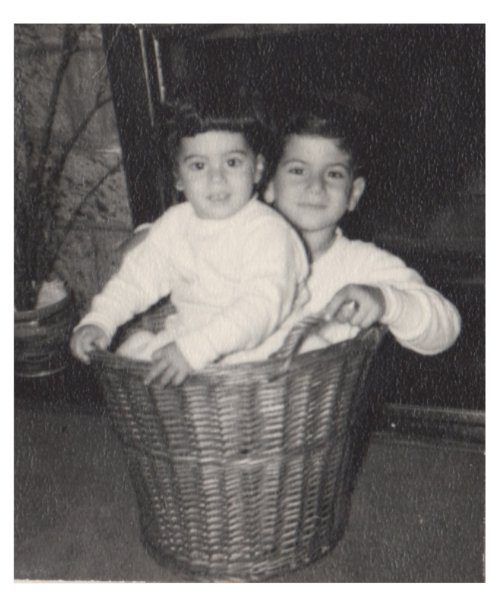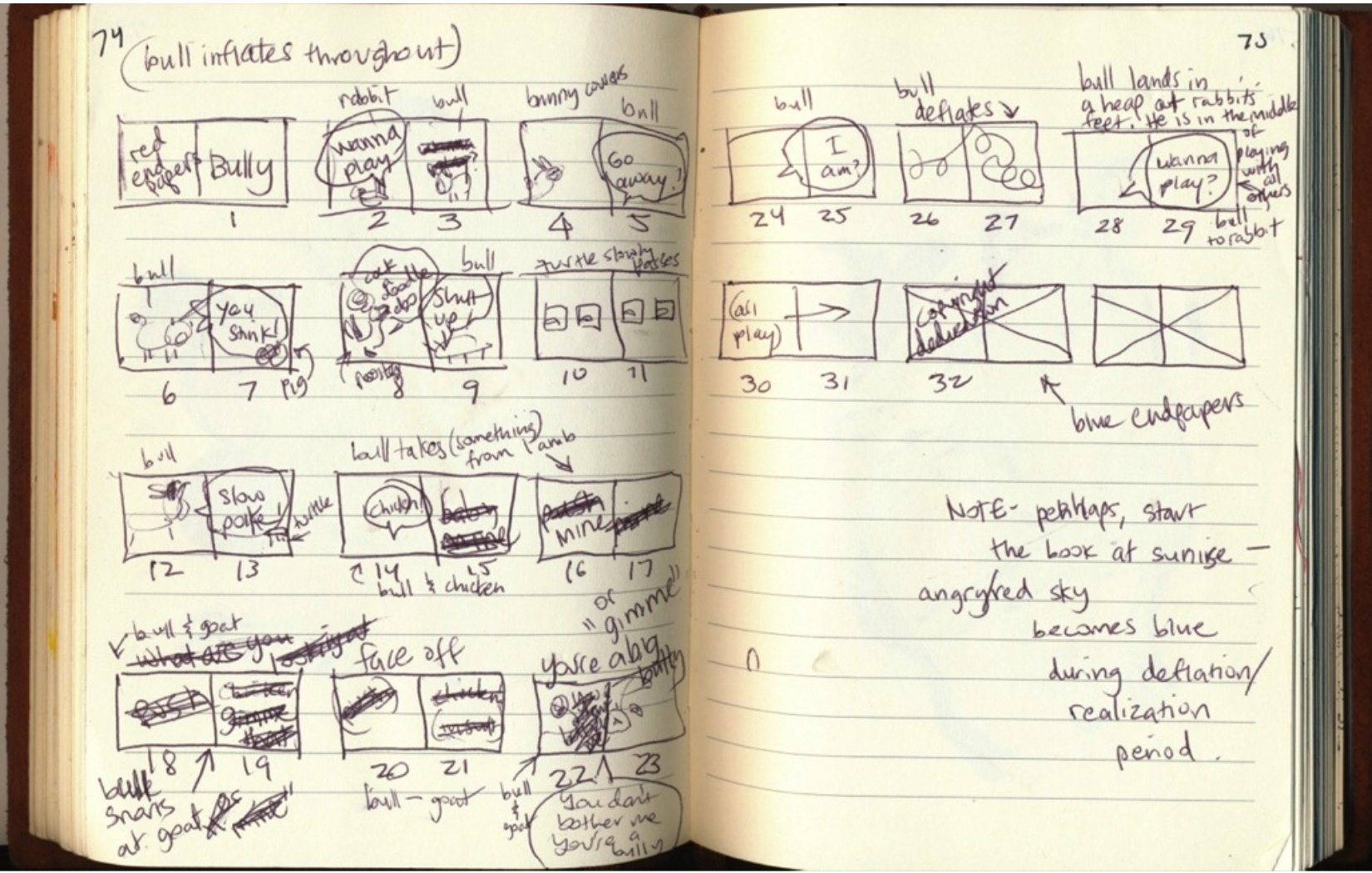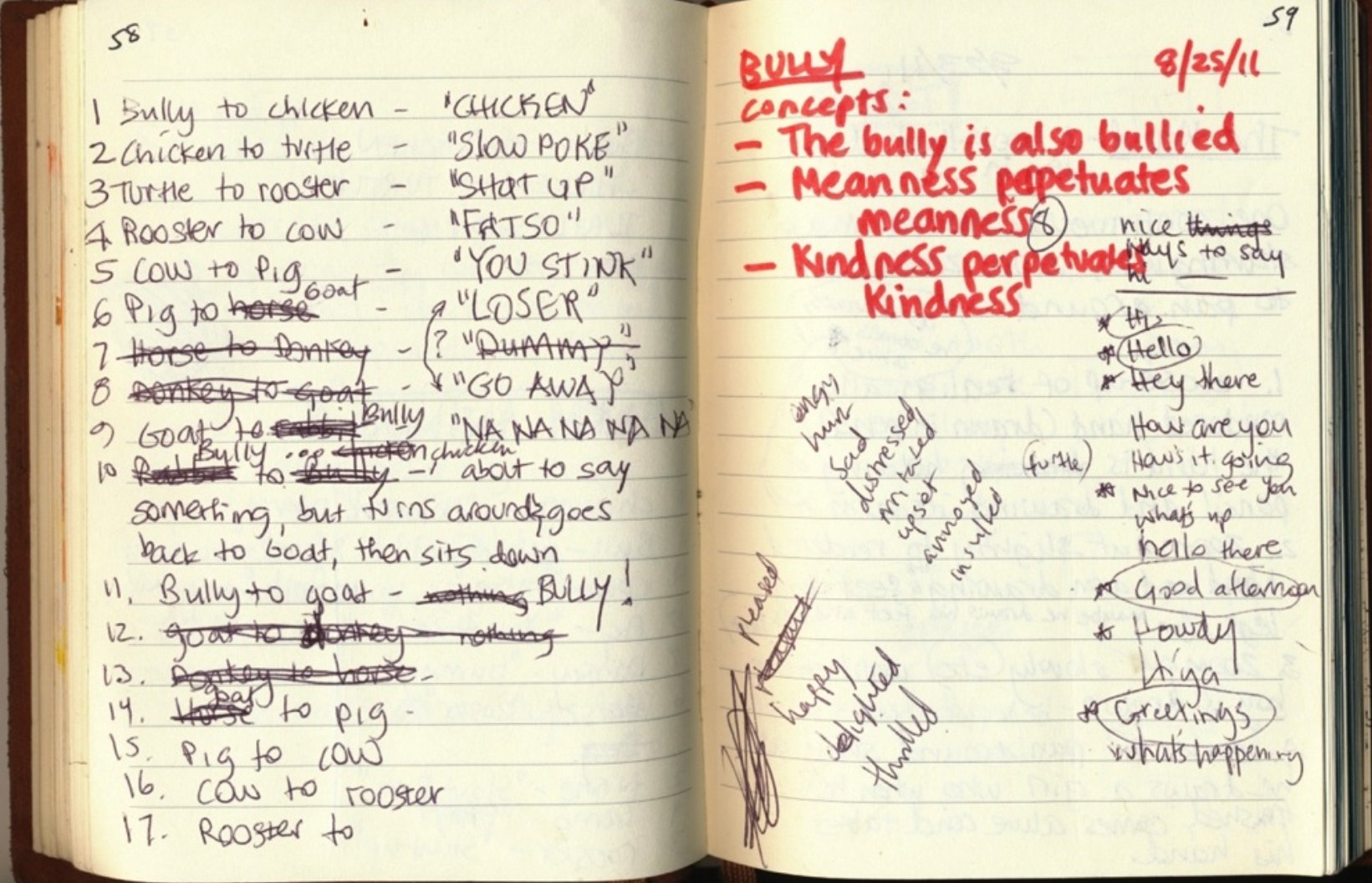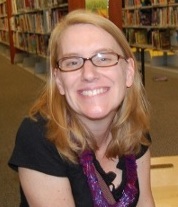Pictured above is an early image from Caldecott Honor medalist Laura Vaccaro Seeger’s Bully, released in July from Neal Porter/Roaring Brook. A little birdie (named Neal Porter, in fact) told me months ago that Laura created the illustrations for this book with a twig and hand-made paper. I knew I wanted to learn more about this, and I sent Laura a few questions a while back. I thank her for taking the time to share today. (We’ve each had a busy summer, but she’s finally had time to answer and I’ve finally got time to post.)
If you haven’t seen the book, the story of a bullied bull who becomes a bully himself, Laura tells us a lot about it below. So, let’s get right to it.
Jules: I suspect authors get tired of being asked about “inspiration,” but why this story now?
Laura: It’s different for every book, so I never tire of the “inspiration” question.
Bully began when my siblings and I were planning a huge birthday celebration for my mom, and my older brother, Billy, had to have everything his way. While my editor, Neal Porter, and I were in Texas one weekend, I complained about it and jokingly told Neal that I’ve officially changed my brother’s name from “Billy” to “Bully.” He replied immediately, “There’s your next book.”
I’ve since thanked my brother for providing me a book idea, but he thinks I’m kidding!
It was really challenging to make a book on the subject of bullying. It was, as always, very important to me that the book not be didactic in any way. But I also had to dig deep inside myself to make sure that I was speaking from a place of honesty and truth about the subject. I’d spent a lot of time asking myself, “How do I feel about bullying?”; “Do I have anything worthwhile to say about it?”; and “What, specifically, is this book about?” Eventually, I realized that this doesn’t need to be a commentary on ALL bullies—this is simply a book about THIS bully—this one little bull, who is being a very big bully.
I’ve always felt very empathetic when witnessing bullying of any kind, and long ago I’d realized that bullies are saying far more about themselves than those they’re bullying. I’d also discovered that, even though it’s not an excuse, there’s almost always a reason for such behavior. That’s why I felt so strongly that on the opening spread—even before the title page—we witness what made this little bull become such a big bully.
I think that if one can understand the bully’s motive, frustration, anger, sadness, pain, etc., then perhaps one can have the self-confidence to stand up to the bully -– or just walk away.
Or maybe even forgive the bully.
I believe, as an author of books for very young children, it is important to not tell the whole story –- to respect the reader and to leave lots of space and room for speculation, interpretation, and discussion. What happened to make this bully act out? How was he feeling? Why, in order to make himself feel bigger, was it so important to him to make everyone else feel smaller? Was he unaware that he was being a big bully? How do we know he was sincerely sorry? Obviously, time had passed before the others forgave him-– what did they discuss before coming to that conclusion?
Jules: Can you talk about how you made the art and why–with a twig and hand-made paper, yes?
Laura: After writing the text for Bully, it quickly became clear to me that it was important that the emphasis remain on the characters, their feelings, and the power of their words. So I needed a subtle, unobtrusive background that was at once inconspicuous and organic. I combined three different hand-made papers to create twenty different backgrounds. In this way, the background of every spread is unique, so there is a subtle sense of movement.
And then there’s the fence. At first, the fence was an added element, whose sole purpose was to provide perspective-–a constant point of reference so that it would be clear that the bully was actually increasing in size rather than getting closer to the focal point of the reader. But then, the fence became very symbolic. These characters are trapped—fenced in both physically and emotionally by this bully and his actions—until the very end when, after some discussion, the bully and his friends walk towards an opening in the fence, implying that a resolution has been found.
For the characters, I knew that since what was happening in the story was very much “in the moment,” I needed the art to feel spontaneous and even slightly rough. I painted lots of bulls, using brushes, markers, pencils, pens–-you name it.
Nothing felt quite right until I discovered that a twig, when dipped in India ink, gave me just the effect I was looking for.
The twig helped to achieve a feeling of underlying tension that is present throughout the story. It even felt a bit tense to paint with the twig—it’s somewhat awkward and messy—but it turned out to be exactly what I needed.
Jules: As reviewers have noted, you pare this story down to its essentials. How hard was that to do? How many drafts did you go through?
Laura: I would say that paring down the story to its essentials is the most difficult thing to do when creating any book. I look at picture book texts and art as I do poetry. Included is only that which is absolutely necessary to tell the story–-nothing more and nothing less.
Like most of my books, this one began as a long narrative-–or a few (I’m not sure how many) long narratives, until I finally settled on one. But once it was time to begin illustrating, then came the decision-making process of deciding what will be told with words and what will be told with pictures. I’ve learned never to get too attached to any element of the book, because I know that it’s just as important to get rid of words and pictures as it is to include them. Storyboarding really helps with the pacing of text and images.
There were many, many revisions and even complete re-writes. It’s amazing how much time is spent thinking and talking about the impact and effectiveness of a single word and deciding which words should and shouldn’t be included.
Jules: I gotta ask about another Caldecott Honor (Green). Congrats! How’d it feel to get that phone call?
Laura: Oh, wow. It’s very difficult to explain how happy it made me to receive such recognition from people I respect so much. Every book begins as a tiny little seed of an idea, and then for varying amounts of time, it travels around my brain–sometimes in the forefront, sometimes in the background, but it needs to stay there until it’s developed, substantial, and interesting enough to actually begin to put on paper. So, you can imagine that by the time a book has been written, painted, printed, and released, it’s become a true part of its author–-it’s like sending your little baby out into the world, and when your baby is admired, it’s a wonderful feeling!
Green took four years from seed to completion, and at one point, I’d decided not to do the book at all because I was having trouble getting it to the point where it felt like my voice. On Monday morning, January 28, 2013 at about 9:15 a.m., my phone rang and the caller ID read, “Seattle, Washington,” the home of the ALA Midwinter conference this year. A few months earlier, hurricane Sandy dropped a gigantic oak tree onto and into my home, and I was getting regular calls from an insurance adjuster from Seattle, so I expected to hear his voice when I answered the phone. But when I heard that wonderful burst of cheer and applause from the committee on speaker phone, I knew for sure that the next sound I was about to hear wouldn’t be the adjuster telling me that my house would be magically put back together without a single hassle. No, no, it was much better than that–-it was the voice of Caldecott Chair, Sandy Imdieke, telling me, “I’ve got some good news for you!”
The other amazing thing is that less than 24 hours later, I boarded a plane for Singapore, where I went for two weeks to speak at the American School and at a Children’s Literature Conference. The conference was organized by Caldecott committee member Nancy Johnson, so instead of celebrating here at home, I got to celebrate in Singapore. Of course, the New York festivities took place later, so I feel as though I’ve been celebrating all year!
It’s an honor that means so, so much to me.
Jules: What’s next for you?
Laura: I’ve just completed the fourth in the Dog and Bear series, due for release in 2014. This one’s called Dog and Bear: Tricks and Treats, and it contains three Halloween-themed stories. I had a great time making this book and it was lots of fun to dress up Dog and Bear in costumes. Also, it’s the first time that Dog and Bear have ventured outside!
Right now I’m beginning work on the next book, but I’m not sure which of the four or five seeds that have been floating around in my head for so long will finally make its way to pen and paper. I’ve got to decide soon, though, because its due date is imminent!
Here’s the Bully book trailer:
And the making-of-Bully video:
BULLY. Copyright © 2013 by Laura Vaccaro Seeger. Published by Neal Porter/Roaring Brook Press, New York. Illustrations used with permission of Laura Vaccaro Seeger. All other images are used with permission of Laura Vaccaro Seeger.
This and many more of Jules’s adventures in books, kids’ lit and illustration can be found at her acclaimed blog, Seven Impossible Things Before Breakfast, where the above interview was published on August 15, 2013.

